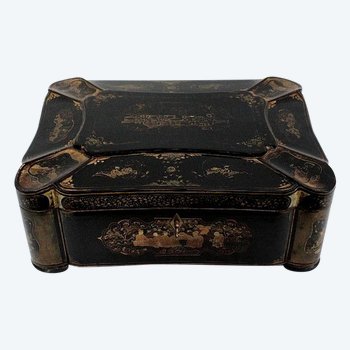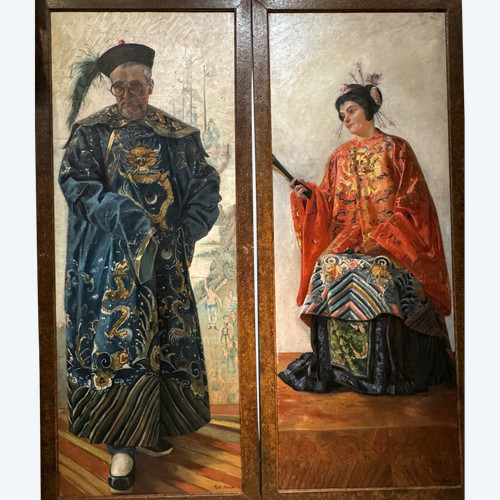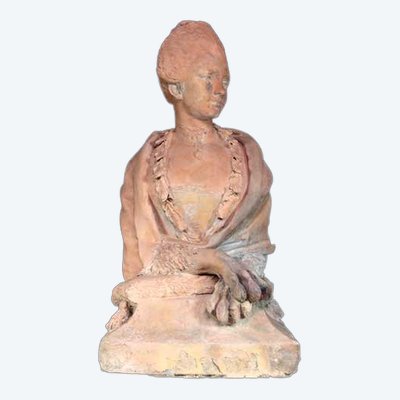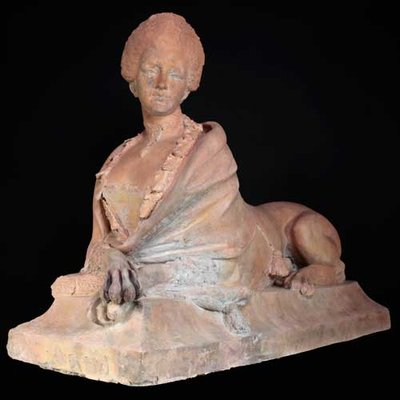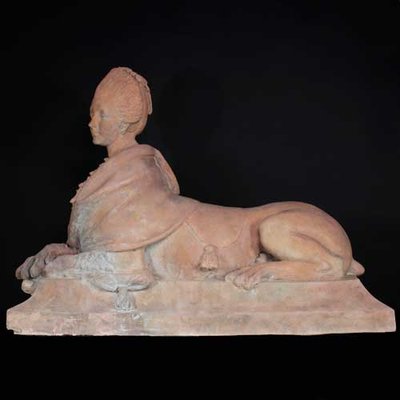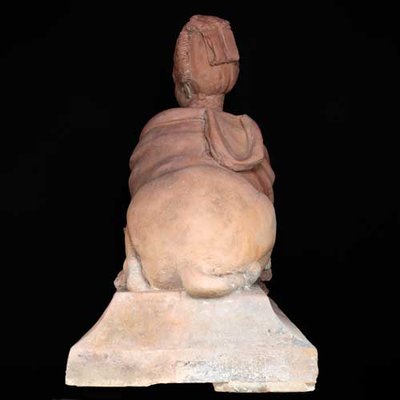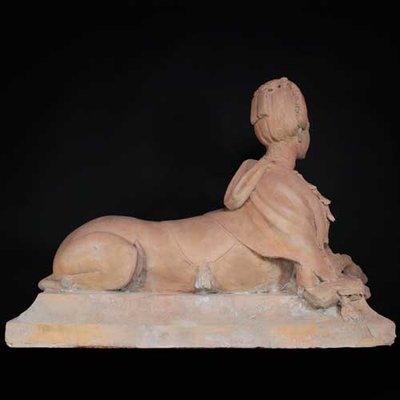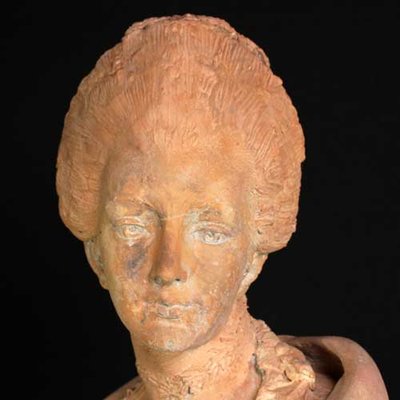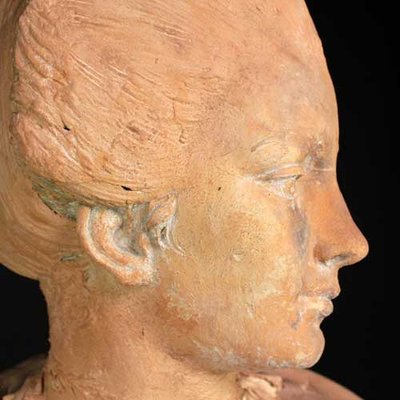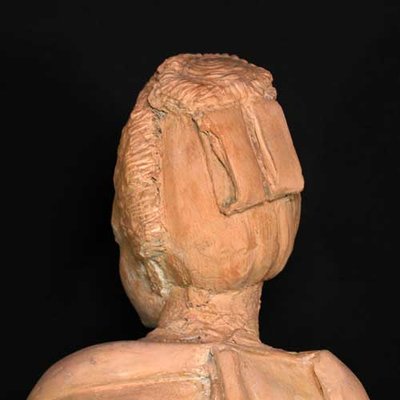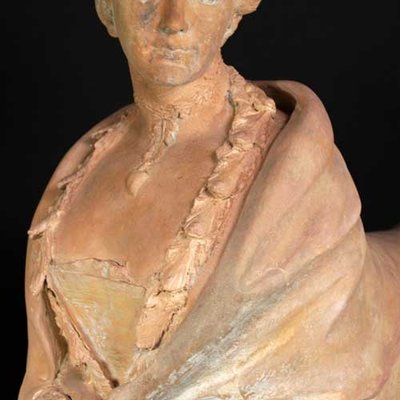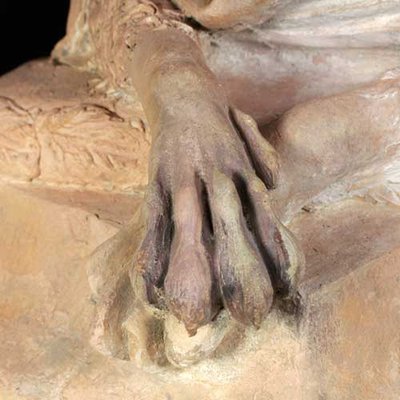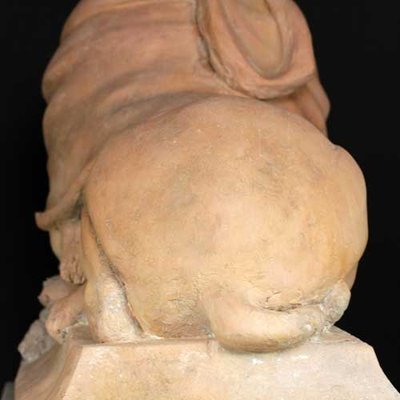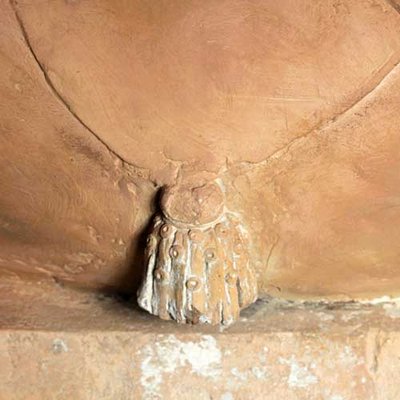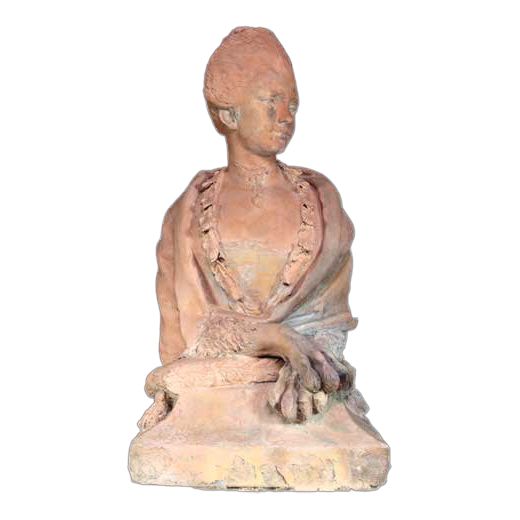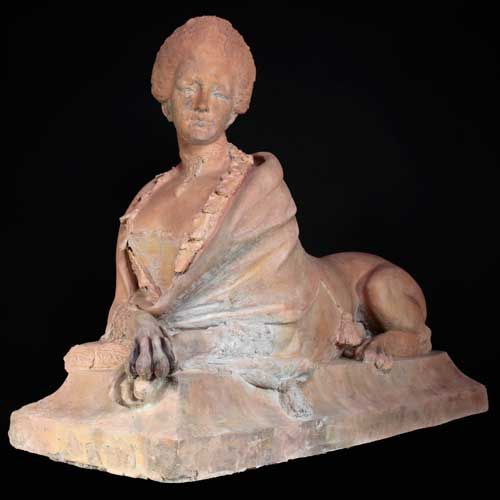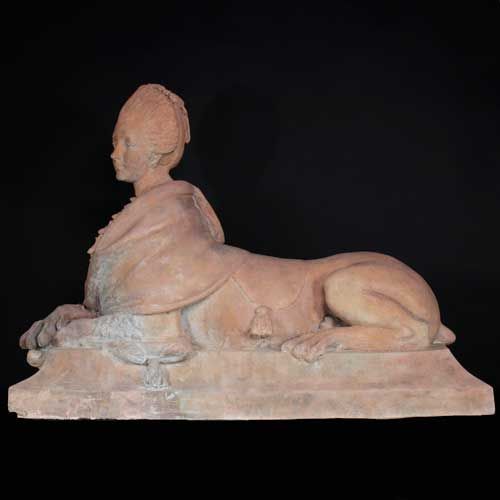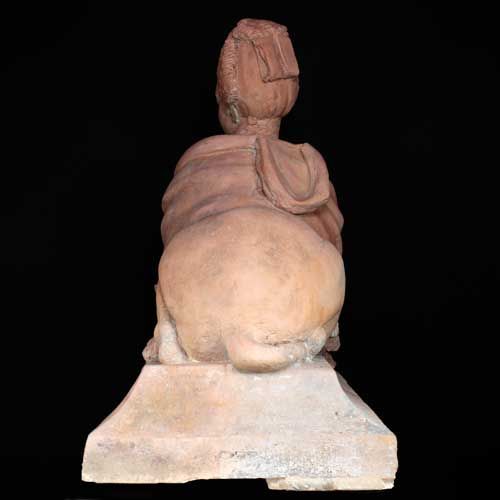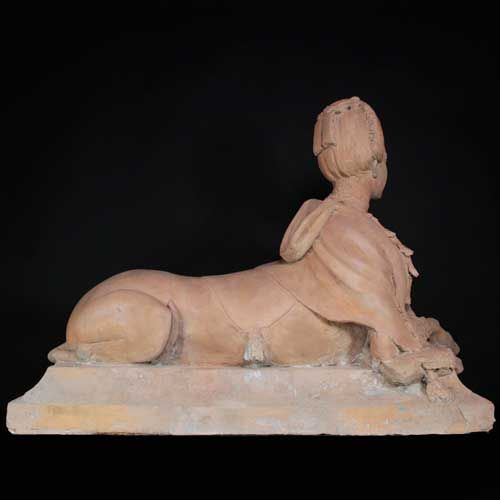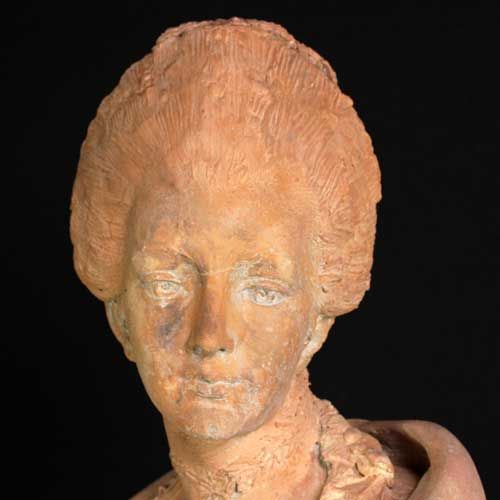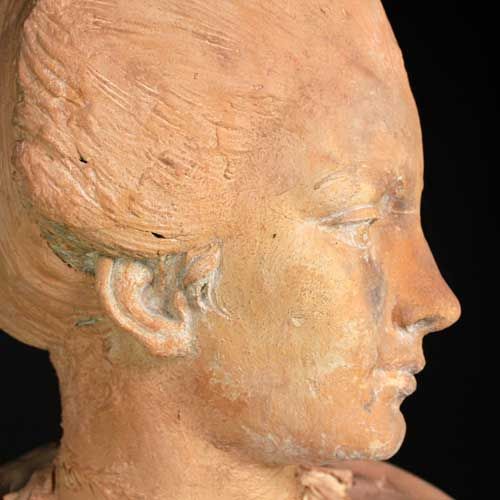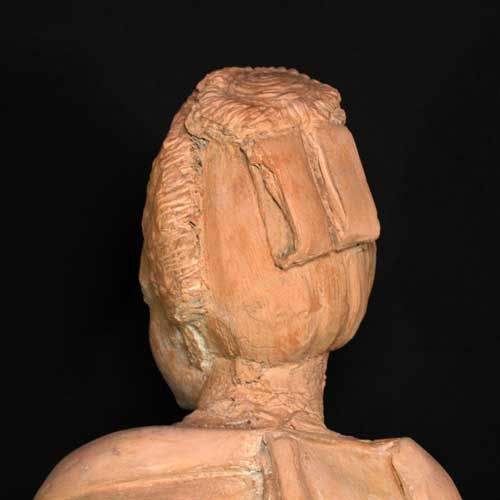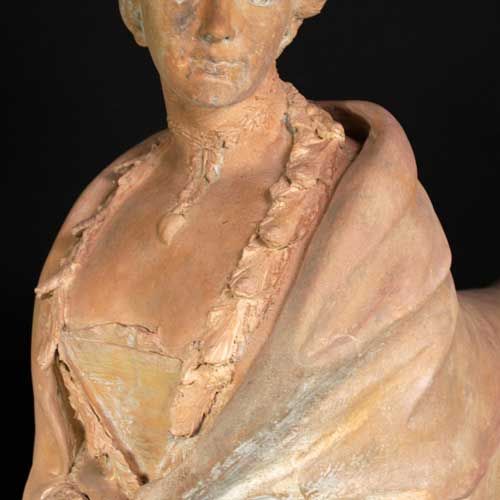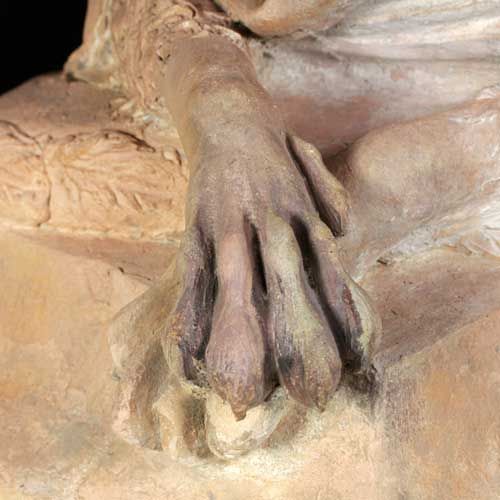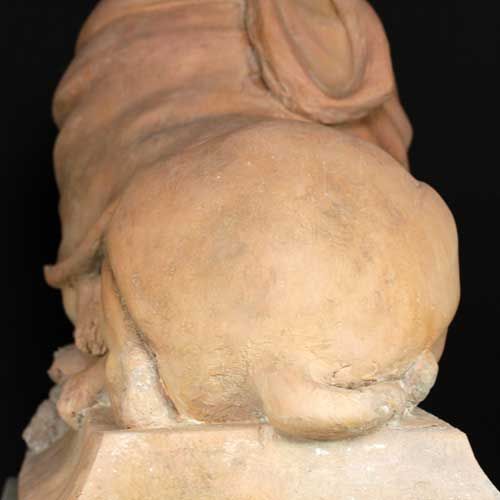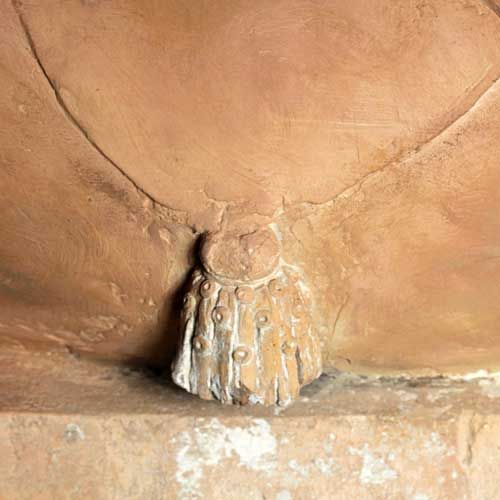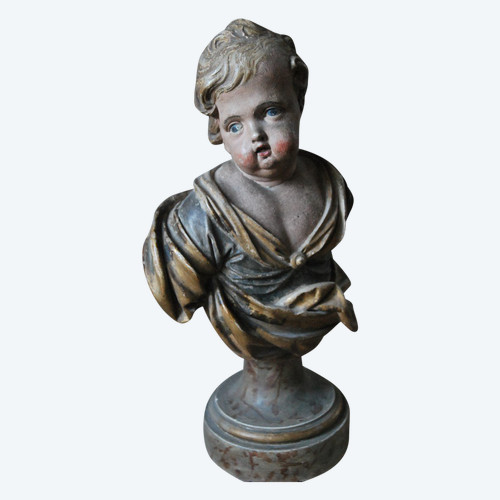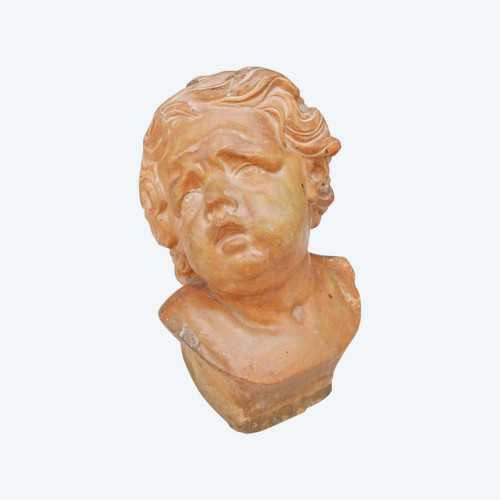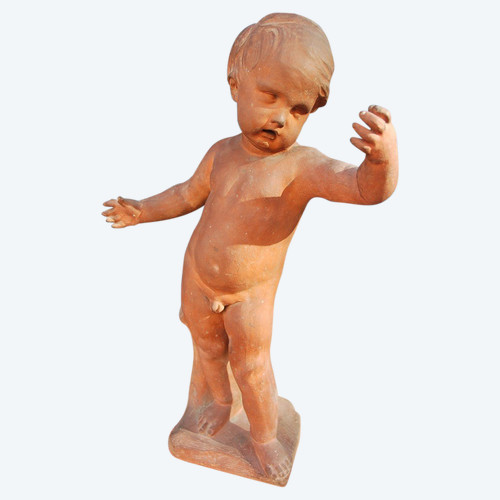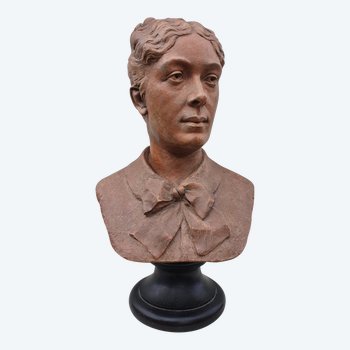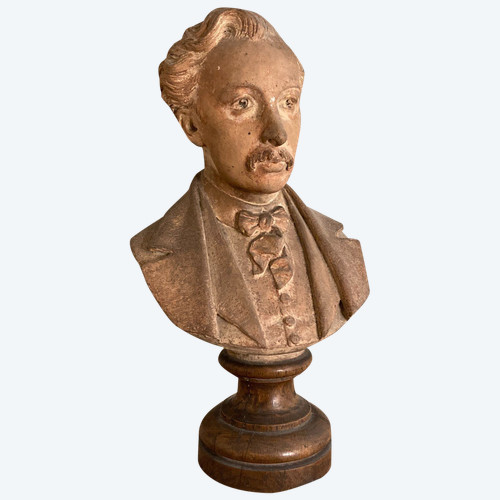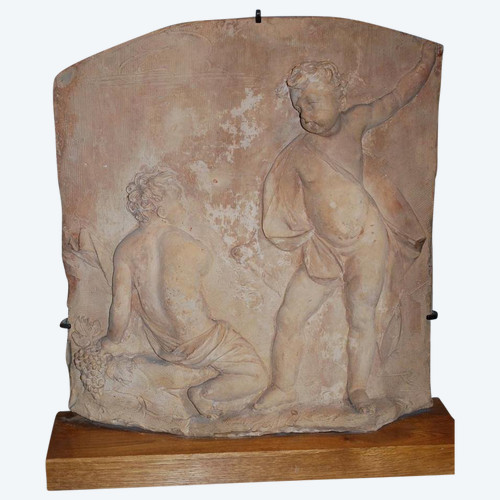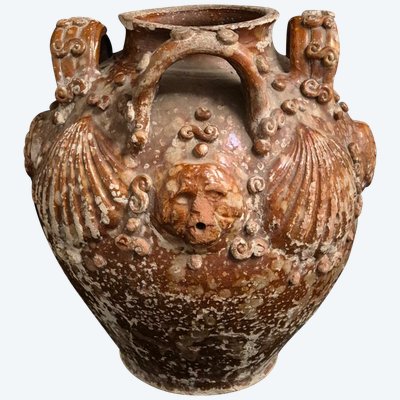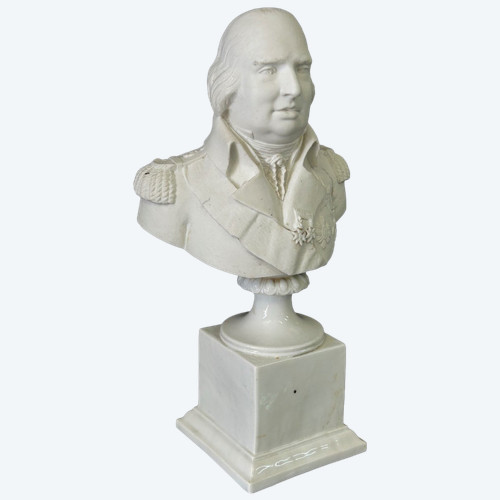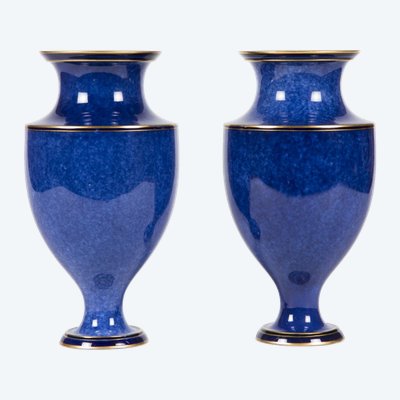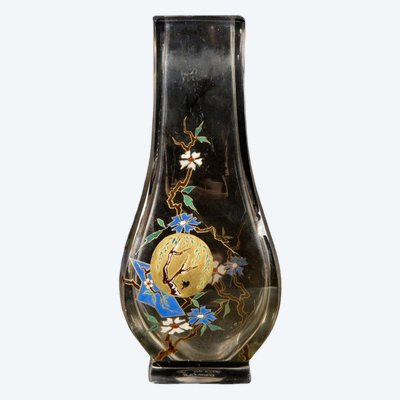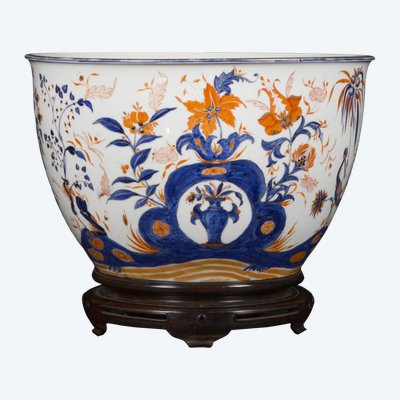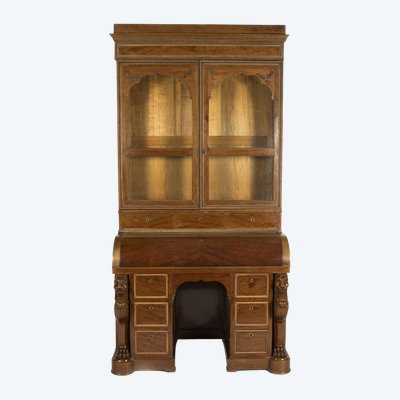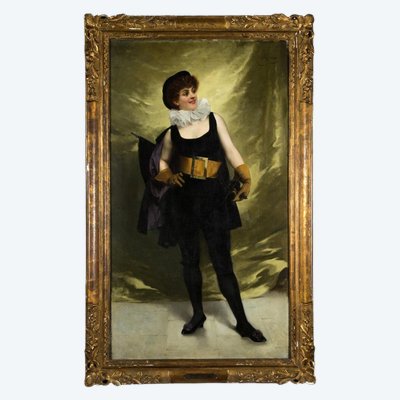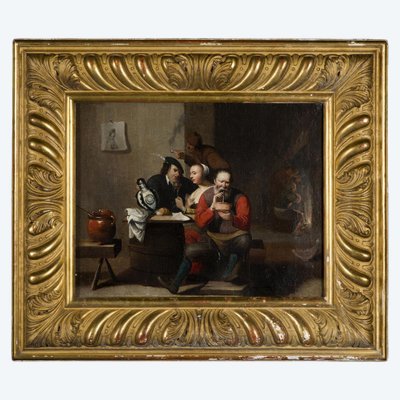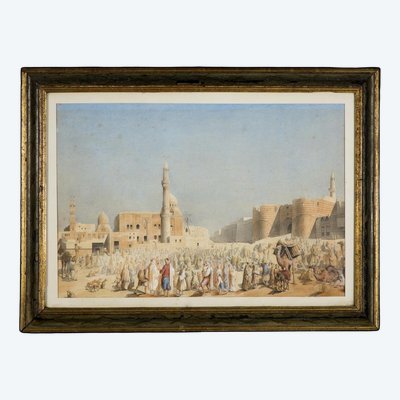This description has been translated and may not be completely accurate. Click here to see the original
Sphinge
Terracotta
18th century
Large terracotta sphinx with a woman's head, late Louis XV - early Louis XVI (between 1770 and 1776). It features a female torso with a plunging bodice, wearing a sleeveless, hooded "domino" dress and a "child's" hairstyle, with curly, crimped hair on the front and a ribbon at the back. The mythological creature, whose two legs rest on a tasselled cushion, wears a curved heart-shaped medallion around its neck, echoing the similar ornamentation on the fabric draped across its rump.
In one of his paintings of young Moses saved from the waters (1638), Nicolas Poussin endows the traditional sphinx figure with a woman's head. In this sense, the Atticist painter, poet of the Arcadia of dreams, brings the miraculous survival of God's chosen child back to the triumph over destruction of life, water, the personified Nile, on which the double symbolism of the sphinx in ancient statuary is based. A mythological animal with a lion's body and a human head, once emblematic of hieroglyphic writing but still feared even in its chimerical existence, the sphinx can thus appear both as the insidious spirit that denies everything (cf. Oedipus) and as a tutelary figure, protective and vigilant in its enigmatic power.
The sphinx in question here is representative of the evolution of its meaning in statuary from the 17th century onwards: Initially ambivalent, apt to arouse fear and strangeness, she becomes reassuring and benevolent, always draped in a mysterious silence from which she never loses her inflexible guarding role in front of noble residences, or at the edge of a park: her power is transfigured in stone, she represents the eternal sovereign, despot and paternal.
The sculpture we're interested in lies at the confluence of a political manifesto and an aesthetic discourse: among the earliest known sculptures of sphinxes in France, dating from the late 17th century, four of them seem to bear the features of several of King Louis XIV's favorites (1). Wearing their hair in the style of Fontange - one of the monarch's last and short-lived mistresses - they display the grace and restraint of the favor they have won, lying with their breasts uncovered. In the same way, our sculpture crystallizes a skilful synthesis of a certain elegance of interpersonal relations - and entre-soi, whose place of choice in the 18th century is eloquent: parks, especially royal and princely ones. If the most famous 18th-century sphinxes that have survived to this day are those enthroned at the top of the grand staircase in the park of Château de Ménars (Loir-et-Cher), representing the Marquise de Pompadour, (2) it's because the latter, not content with having reigned over the influence of decorative art at court under Louis XV, breathed timeless life into her own model of favorite philosopher and protector of the Enlightenment through a number of artistic achievements - in stone.
What then is the identity of this sphinx with the mysterious ribbon tied around its neck? The heart-shaped, medallion-shaped pendeloque is probably a reliquary of love, and, containing some ardent memory, could evoke another of Louis XV's sweethearts, whose last years she shared until 1774: the Countess du Barry (3). Although some sphinges have similarities with other sculptures, none offers a complete set of identical features. (4)
Hence the exclusive dimension of the sculpture in question: the delicacy of the quarter-turned head, uncommon before 1770, the skilful elaboration of the historiated coiffure, the haughty movement with which the impenetrable, smiling figure seems to be moved, all contribute to a natural majesty befitting the art of Western gardens from the Renaissance onwards, and in this case in the 18th century. The final question, however, is its original destination and location. An enigma, just as the strangeness of its charm remains, in a mute supernatural, whole. (5)
RELATED WORK :
1. Four white marble sphinxes with women's heads; presumed portraits of mistresses of Louis XIV; they are shown reclining, their bodies partly covered by a drapery decorated with tassels and held on the chest by a ribbon bow. Early 18th century (H. 80 - L. 100 - W. 40 cm). Provenance: Château in Brittany, Château de Royaumont then Château de Chantilly. Sale May 8, 1901 at Drouot.
2. Pair of "Pompadour" sphinges, Parc et Château de Ménars (Loir-et-Cher).
3. Pair of terracotta sphinxes with child, mid-18th century (H. 75 - W. 90 - D. 45 cm) Provenance: Sotheby's sale, December 2008.
4. Pair of Sèvres cookie sphinxes representing the Countess du Barry, circa 1780 (W.10 - D.16 - H.1
Ref: TLDQUH4ZBE
 Louis XIV oak sacristy cabinet sideboard
1.300 € EUR
Louis XIV oak sacristy cabinet sideboard
1.300 € EUR


